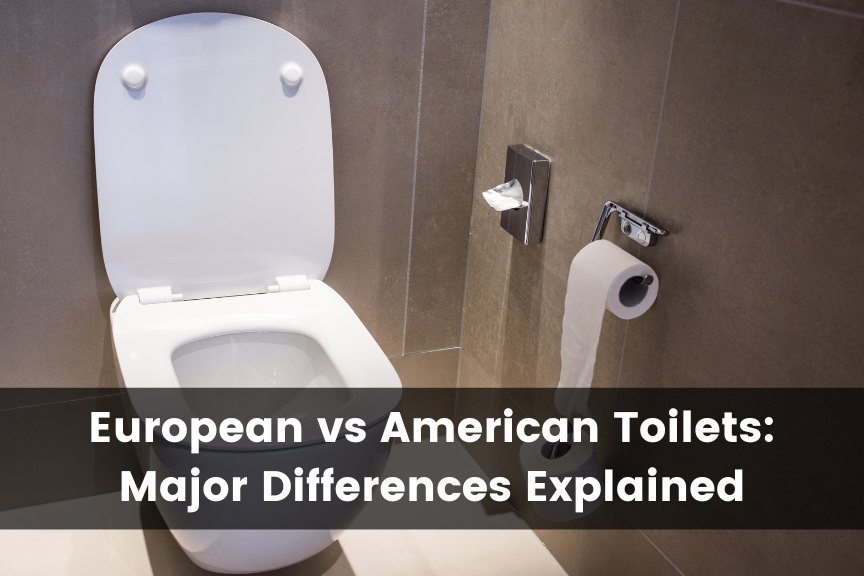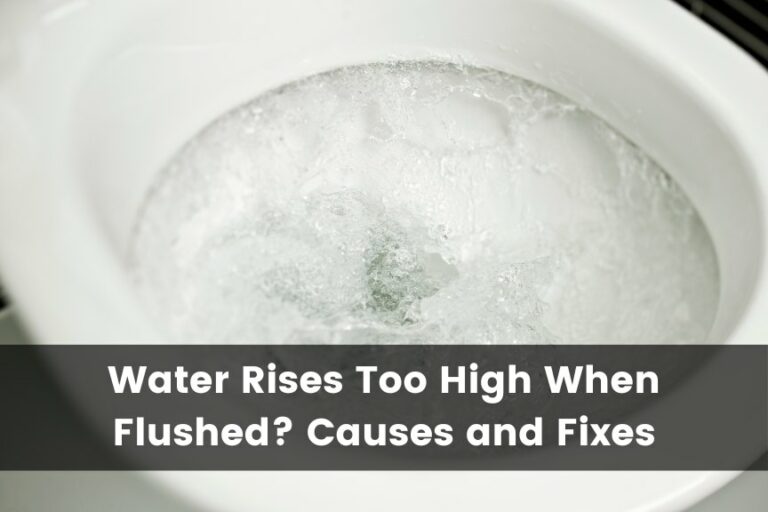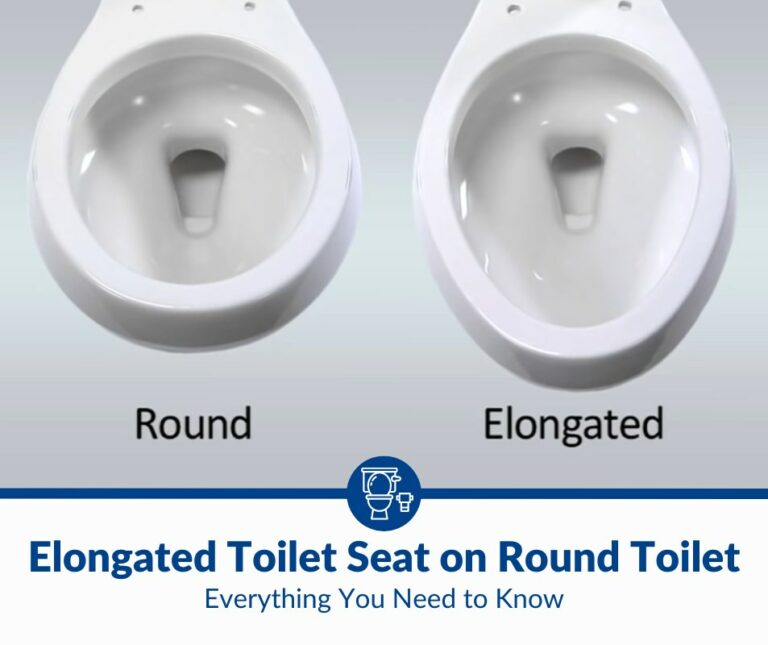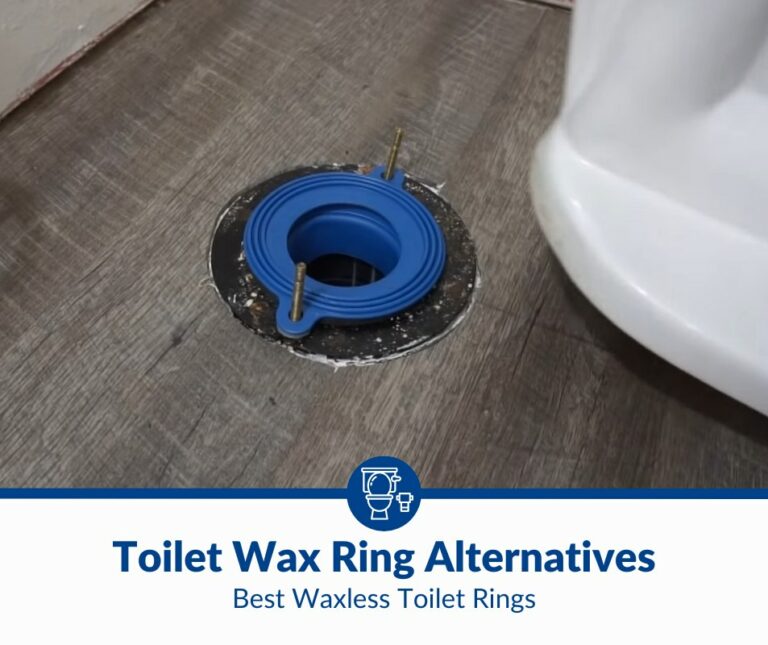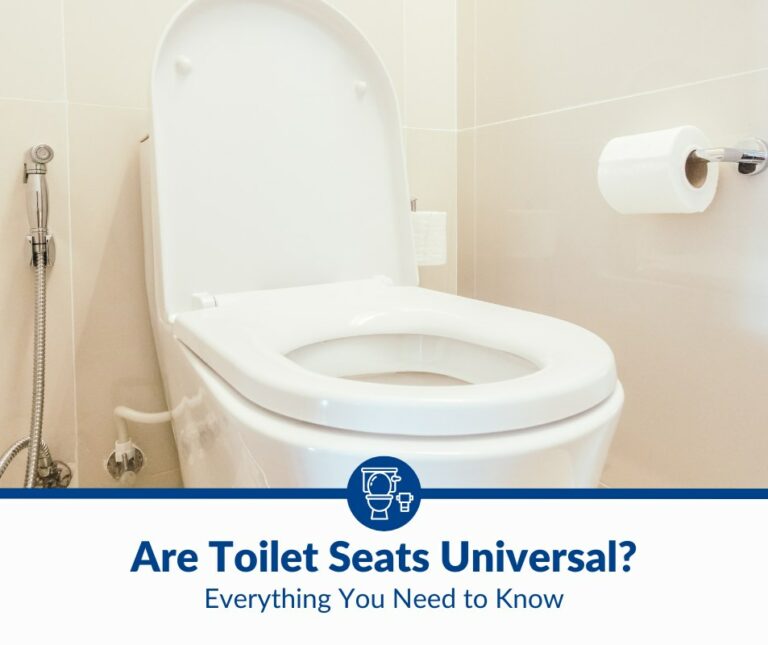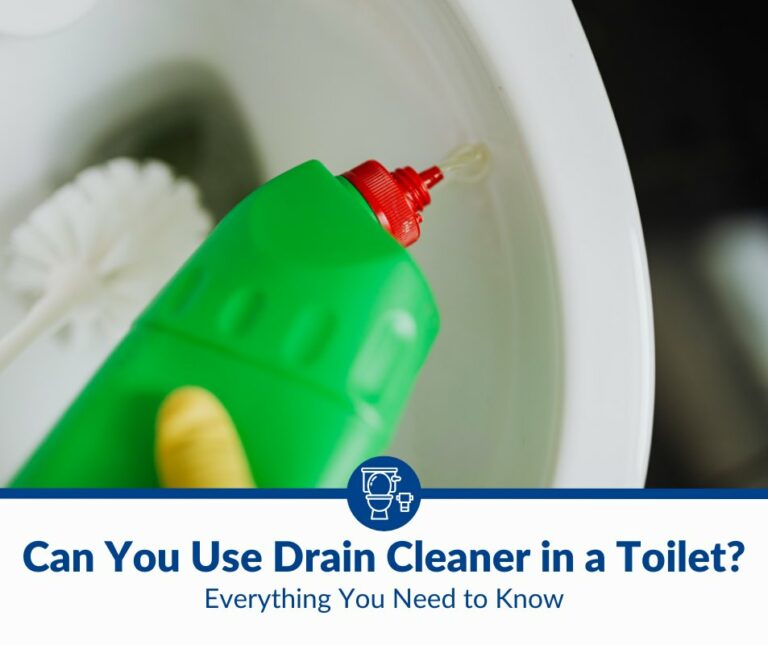European Toilets vs American: Major Differences Explained
When traveling abroad, even the trip to the bathroom might end up being a strange and wondrous thing. There are major differences between American and European toilets, which can be surprising to those who have never traveled overseas.
American toilets use a siphonic system to remove waste, while European toilets use a washdown system. There’s also a difference in the volume of water in the toilet bowl. Americans have a higher water level to allow for the suction to create and pull the waste into the pipes.
In the rest of this article, I’ll explain the main differences between the waste-removal system in America and Europe. I’ll also discuss other curiosities you can find in European bathrooms and how they affect your toilet use.
Differences Between an American Style Toilet and a European Style Toilet
American toilets and European toilets are quite different, although it might not seem that way when you look at them. Both designs have certain pros and cons for their users; here’s a closer look at those:
American Toilets
Pros
- American toilets use 3-inch (7.62 cm) pipes. This allows for more flexibility when installing them and makes them easier to fit in designated places.
- American toilets have a high level of water in the bowl. This helps with the elimination of smells while also preventing the accumulation of waste inside the toilet bowl.
- Since the bowls need to be filled with water to allow for waste elimination, American toilets are bigger than European ones. This makes them more comfortable, and that comes as a big plus to people who like to take their time on the toilet.
Cons
- With the high level of water in American toilets, there’s the problem of splashback… and there’s nothing that can really be done to counteract it. The only option is to change the surface tension of the water in the bowl by dropping a piece of toilet tissue in it before using the toilet.
- American toilets use up a lot of water. To flush a siphonic toilet successfully, you need at least 1.6 gallons (6 L) of water, sometimes even more. Toilets built before 1982 use 5-7 gallons (19-26.5 L) of water. With 2.2 billion people having restricted access to drinking water, this seems a little excessive and harmful for the environment.
- Siphonic toilets get clogged more often. This happens due to the smaller trapway these types of toilet bowls have. A little more toilet paper than usual, and a siphonic toilet can turn into a fountain instead of a toilet.
- Because of the large quantity of water used when flushing, American toilets produce a more substantial toilet plume. This, in turn, allows for a greater distribution of microscopic particles of fecal matter all around the bathroom. Don’t forget to close those toilet lids before flushing!
European Toilets
Pros
- European toilets are smaller. This makes them perfect for small bathrooms and allows homeowners to place them in tighter bathroom corners.
- Washdown toilets use less water than siphonic ones. Because European toilets have a dual flushing mechanism, it allows them to choose the appropriate volume of water depending on whether they use it for defecation or urination.
- Washdown toilets get clogged less often. This is because European toilets use larger-diameter pipes. They’re typically 4-inch (10.16 cm) larger pipes than American toilets.
- With the lower level of water, there’s less splashback. While some splashback isn’t the end of the world when you’re at home, and you can disinfect or take a shower, it can be a nightmare scenario in a public toilet that can leave you with an array of illnesses.
- A combination of less water used to flush and a lower water level in the bowl causes a smaller toilet plume. After finding out how much fecal matter ends up on our toothbrushes, this is welcome news.
Cons
- Because of a different design and a lower water level, washdown toilets are harder to keep clean. Because of the way the toilet catches fecal matter, waste marks are a possibility. Thankfully, that’s what toilet brushes were invented for.
- Because the toilet bowl has a shelf, the washdown toilets are prone to unpleasant odors. Unlike siphonic toilets that have a large amount of water in the bowl that covers up the excrement completely, these types of toilets expose it to air, making your number two a smelly experience. But there are always air fresheners, right?
Here’s a fantastic video by Builders Hardware from YouTube showing the difference between the flushing power of American siphonic toilets and European washdown toilets:
This simple test shows washdown toilets get rid of waste in a faster and smoother way than siphonic toilets. However, you can also see the difference in the water level, an important feature to many people who are used to this sort of comfort.
How Do Americans Toilets Work?
American toilets have a long, narrow P or S-shaped pipe that runs from the toilet bowl to the drainage system. This is called a trapway. When the flush button is pushed, it opens the valve that lets the water out of the water tank.
The tank water then raises the water level in the bowl and creates a sort of vacuum by displacing the air in the pipes. The water pulls the waste through the trapway to the weir (the boundary between the trapway and drain) and into the pipes.
The whole system works because the drain pipe is filled with air, with the weir being a border between air and water. This creates a partial vacuum in the trapway and sucks the waste to the drain.
This is known as the siphoning effect — the same thing you use to siphon gas from your car tank.
To create this amount of suction, the trapway needs to be narrow, so most American toilets have 2-inch (5 cm) trapways, which is, unfortunately, sometimes the cause of the clogs.
For the more visual learners, here’s a great video by This Old House you can find on YouTube that shows how the siphon system work in detail:
Tips To Consider When Dealing With Clogged American Toilets
Since American toilets are prone to clogging, here are a few tips to help you with that issue:
- Choose the right plunger. When looking for a plunger, I recommend this OXO Good Grips Toilet Plunger from Amazon. This plunger, with a universal design, has a flat top handle that provides a secure and firm grip for the best unclogging effect. It works on all toilets and has a drip tray with a ventilation slot that helps to dry the water after use.
- If you don’t have a plunger, try hot water and kitchen soap. The slippery dish soap will help to unclog the obstacle and dissolve it. Adding hot water from a height will add some pressure and dislodge the problem.
- Try a mix of baking soda and vinegar. Add the mixture into the bowl half filled with water. First, add the baking soda, then the vinegar, and let it fizz for twenty minutes. Afterward, add hot water from the waist level height.
Here’s a YouTube video by The Art of Manliness that explains how to unclog the toilet like a plumber:
How Do European Toilets Work?
Unlike American toilets that use a siphonic system, European toilets use the washdown method. When the flush button is pressed, it releases the water valve.
The water weight, pressure, and gravitational flow push the waste into the trapway by force. Since the trapway in European toilets is shorter and broader than in American toilets, this is enough to launch the waste into the drainage pipes.
The mass of the waste is larger than the mass of the water in the bowl, making the sheer force of water enough to flush the excrement.
Most European toilets also have water tanks with the dual flush option, which allows for a smaller or bigger amount of water to be released, depending on the demand.
If you wish to bring a bit of Europe into your home, I recommend this KOHLER 3989-0 Highline Comfort Height Toilet from Amazon. It features an elongated bowl and a chair-height seat for maximum comfort. This beautiful toilet comes in three color options: biscuit, black, and white.
It also offers a dual-flush lever with a choice of 1.1 or 1.6 gallons (4.2 or 6 L) per flush. The 1.1-gallon (4.2 L) option reduces water consumption by 30% — a whopping 4,000 gallons (15,141 L) of water every year. It also allows for an adjustment of the water level in the bowl by just adjusting the screw in the tank.
What To Do About Toilet Stains and Foul Odors With European Toilets
Since European toilets have a lower water level inside the bowl, sometimes waste marks and foul odors are a sad reality. The only way to combat these is with good toilet brushes and air fresheners.
When it comes to toilet brushes, despite the fact we’re used to standard brushes, I recommend this Clorox ToiletWand Cleaning Starter Kit from Amazon. This toilet wand comes with toilet scrub pad refills. The heads click onto the toilet wand for the most efficient scrub and disinfection.
The scrub pads preloaded with Clorox cleaner remove stains, kill 99.9% of bacteria, and allow you to clean those hard-to-reach places without a drop of sweat.
If the foul odors are your problem, I recommend this Air Wick Freshmatic Automatic Spray Kit from Amazon. It contains a wall-mounted automatic gadget and two refills. It neutralizes odors and fills your bathroom with the smell of summer and fresh linen drying on the clothesline.
Each refill lasts for 70 days, and the device can spray the fragrance every 9, 18, or 40 minutes, depending on your preferred setting.
Why American Toilets Are Designed Differently Than European Toilets
European toilets have a lower water level and use a different, more prudent waste flushing system, which we already know. But did you know why European toilets have a “shelf” inside the bowl?
This design was invented in Germany, from where it spread all over Europe. They designed the toilet in a practical way, like everything they do. The reasoning for it was that the shelf in the toilet bowl was used so that after defecation, the excrement could be examined and checked to see if everything was looking within normal limits or if the doctor should be contacted.
This flat surface in the toilet bowl is called a Flachspüler (the flat flusher in German), and while it might have the aspect of necessary added cleaning, it’s a real savior when it comes to splashback.
Since the Americans decided that they didn’t want to struggle with the European problem of stains in the bowl and the unpleasant smell, they redesigned the toilet bowl into this final, modern form that we all know and use today.
This simple change from a washdown to a siphonic system took care of all the problems European toilets brought with them — the simple rise in water level did the trick. And while this change from washdown to siphonic brought other kinds of issues, both types of toilets are available options for American households.
If you like European-style toilets while traveling abroad, try this Swiss Madison St. Tropez One Piece Toilet, which you can find on Amazon. This sleek-looking elegant toilet comes with a top and a left-side dual flush offering the 0.8 and 1.28 gallons (3 and 4.8 L) options.
It has a comfortable height bowl, a soft-close toilet seat, and a washdown flushing system that will take care of all your clogging problems. St. Tropez toilet comes in bisque, glossy white, matte black, and matte white, making it all the more likely to fit perfectly into your bathroom.
Why Do Many European Toilets Have Bidets?
American toilets often get clogged, partly because of narrow pipes and drains and partly because Americans tend to use extremely large amounts of toilet paper. Although they make up only 4% of the world’s total population, Americans are responsible for consuming 20% of the world’s total amount of toilet paper.
An average American uses 28 lbs (12.7 kg) of toilet paper, or, to be more precise, 141 rolls of toilet paper per year. With a two-inch (5 cm) trapway, that’s often too much for the drain to handle. In combination with wet wipes used to achieve the necessary level of hygiene, this is a toilet disaster waiting to happen.
Even though they weren’t invented with that in mind, in modern Europe, the bidet is used today as a means of reducing the consumption of toilet paper and as a means of maintaining the highest level of hygiene.
In many homes, bidets are standard companions of toilets and are used for cleansing with water after defecation. In this way, the excessive consumption of toilet paper is reduced, which is beneficial for protecting the environment in the long run.
If a reduction in toilet paper consumption, and subsequently the rise in your home budget, is something you find alluring, try with your own bidet toilet attachment. I recommend this LUXE Bidet Neo 120 Toilet Attachment from Amazon.
This luxurious and sleek-looking wall-mounted bidet will bring ultimate quality and elegance into your bathroom. This bidet attachment will help you save your money and save the planet, all the while giving you the highest level of freshness while being gentle to your skin. It also comes with an 18-month warranty to ensure your satisfaction.
Additionally, it’s also very easy to install. Simply remove the toilet seat and its parts, position the bidet and reattach the toilet seat as it was before. Ensure you attach the bidet pipes to the water supply, and you’re good to go.
Besides an easy-to-do-yourself installation, this bidet has a retractable self-cleaning nozzle and a nozzle guard gate. You also don’t have to worry about the hygiene part of it; after every use, the bidet nozzle retracts, keeping it protected and clean while you do your business.
Luxe Neo is the number one bidet brand in the US, with more than 3 million products sold, 140,000 rave reviews, and 14 years of experience.
Conclusion
Although every toilet looks the same at first glance, the differences between European and American ones are considerable. They owe something to different methods of construction and the size of the pipes, but the differences are primarily cultural. While Americans value their comfort, Europeans usually put functionality and space-saving first.
Even though both types of toilets have their advantages and disadvantages, if you like some features of European toilets, you can adopt any of its aspects to fit comfortably into your home. Don’t forget, the toilet is the throne in your house, so adapt it to your needs.

